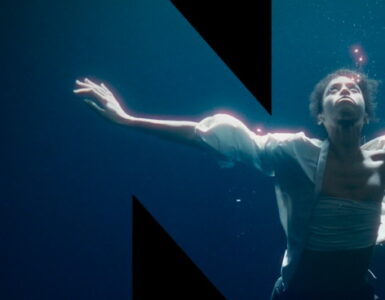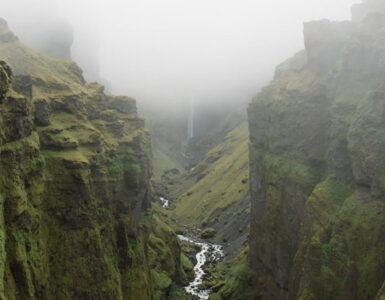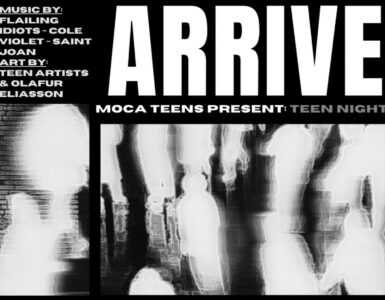This weekend ONLY – the Getty presents The Ornament and the Enchantress film series, at the J. Paul Getty Museum at the Getty Center June 26th and 27th, 2010.
These classic femme fatale films complement the newly opened art exhibition, “The Spectacular Art of Jean-Léon Gérôme” – on display until September 12th, 2010.
Who doesn”™t love a lush harem, bejeweled dancers, chiseled slaves and epic tales of sin and vengeance? Indulge your appetite for romance, exoticism, sensuality and kitsch in The Ornament and the Enchantress film series, presented by the J. Paul Getty Museum in complement to the exhibition “The Spectacular Art of Jean-Léon Gérôme,” on view at the J. Paul Getty Museum at the Getty Center until September 12th, 2010.
This film series was inspired by the sensual, implicitly eroticized women in Gérôme”™s work, in which luxuriant odalisques are placed in opulently decorated interiors. His paintings inspired Hollywood directors from D.W. Griffith to Steven Spielberg, and gave rise to the irresistibly larger-than-life enchantresses in Salome, Cleopatra, Samson and Delilah, and Mata Hari, the four films to be screened at the Harold M. Williams Auditorium at the Getty Center June 26-27.
Given Hollywood”™s Puritanism, it”™s no surprise that these femme fatales pay the ultimate price for their erotic inclinations. But when they go out, they go out with style!
The Ornament and the Enchantress is presented Saturday and Sunday, June 26th and 27th in the Harold M. Williams Auditorium at the Getty Center.
Admission is free, but reservations for each film are required. To make reservations, call (310) 440-7300 or visit the official site
|
|
Schedule of Films
June 26, 3pm
SALOME
(1922) Directed by Charles Bryant
Producer: Nazimova. Screenplay: Peter Winters. Based on Oscar Wilde”™s play. Cinematographer: Charles Van Enger. Art Director: Natacha Rambova. With: Nazimova, Rose Dione, Mitchell Lewis, Nigel de Brulier. 35mm, tinted, silent, 75 min. Live piano accompaniment by Michael Mortilla. Preservation funded by George Eastman House.
A fascinating early art film, SALOME is part Aubrey Beardsley”™s Art Nouveau illustrations and part narcotic-induced, decadent “˜20s Hollywood.
Stage actress and screen star Alla Nazimova is Salome, the biblical seductress who, bored by her uncle Herod”™s lewd attraction to her, turns her interest to the jailed John the Baptist who, of course, only has eyes for God. Played here as the ultimate femme fatale, Salome agrees to dance for Herod under one condition: that he bring her the head of the pious prisoner.
June 26, 7pm
CLEOPATRA
(1934) Directed by Cecil B. DeMille
Producer: C.B. DeMille. With: Claudette Colbert, Warren William, Henry Wilcoxon, Gertrude Michael. 35mm, 102 min. Preserved by the UCLA Film & Television Archive.
Laying the groundwork for the epic opulence and style of the type of film that would be categorized simply as DeMillion, the great producer/director here forgoes Shakespearian inclination for his preferred flavor of history: sin and sex with a moral chaser.
Cleopatra (Colbert) is seen kidnapped by her brother Ptolemy”™s minions and dumped in the desert warned never to return to Alexandria. Cleo has other ideas and knowing that Julius Caesar is to arrive to annex Egypt, she has herself transported home to be thrown at his feet. Caesar falls hard and fast and takes her back to Rome with the intent to wed. His speech doesn”™t go over well however, and now it”™s Anthony who Cleo must seduce and does so in the film”™s greatest set piece: The Royal Barge. Here art direction, costuming and spectacle converge in an intoxicating cabaret. Cue the chiseled oarsmen, the garlanded ox, the slave girls, some dressed in leopard, some clad only in seaweed as they wriggle on the deck to offer seashells full of jewels. Anthony is hooked (who wouldn”™t be?) and remains with Cleopatra until fate intervenes.
June 27, Noon
SAMSON AND DELILAH
(1949) Directed by Cecil B. DeMille
Producer: Cecil B. DeMille. Screenplay: Jesse L. Lasky Jr., Frederic M. Franc. Cinematographer: George Barnes. Editor: Anne Bauchens. With: Hedy Lamarr, Victor Mature, George Sanders, Angela Lansbury, Olive Dearing. 35mm, 120 min.
Long before there were STAR WARS, E.T, or IRON MAN, before there was the “wide release” in the 16-theater Multiplex, there was Cecil B. DeMille and in every major city there was the grand movie palace. DeMille”™s films were cinematic events, the original blockbusters. He has been heralded as the first filmmaker to “give the public what it wanted,” and what it wanted was over-the-top costumes and sets, and epic storylines of love and vengeance, wrapped in a neat package of forbidden sins and piety. Muscular biblical kitsch, they don”™t make “˜em like they used to.
June 27, 3pm
MATA HARI
(1932) Directed by George Fitzmaurice
Producer: Irving Thalberg (uncredited). Screenplay: Benjamin Glazer, Leo Birinski. Cinematographer: William Daniels. Editor: Frank Sullivan. With: Greta Garbo, Ramon Novarro, Lionel Barrymore, Lewis Stone, C. Henry Gordon. 35mm, 90 min.
As a young woman, Dutch-born Margaretha Gertrud Zelle studied dance in Indonesia while stationed there with her husband in the late 1800s. At 27 she left her family, took the stage name of Mata Hari, and scandalized polite Parisian society with her semi-erotic dance shows. Her act was very popular, but even more were her provocative photos wherein she wore nothing but a bejeweled bra and headdress. By the time World War I hit, she was close to 40 and less in demand as a dancer. She was, however, a popular courtesan with high-ranking officers and politicians. Her promiscuity and lifestyle gave rise to the notion that she was a spy, potentially a double agent, and she was eventually put on trial and executed.
Here Mata is a dedicated German spy with her eye on both an elder Russian General (Barrymore) and the young, goo-goo-eyed Russian flyer Rosanoff (Novarro). Shown to have all Paris at her fingertips, she hastens her decline in falling for Rosanoff. Blinded (literally) by love, Rosanoff visits the jailed Mata who is doomed, as a classic femme fatale, to a short but glamorous life.
The J. Paul Getty Trust is an international cultural and philanthropic institution devoted to the visual arts that features the J. Paul Getty Museum, the Getty Research Institute, the Getty Conservation Institute, and the Getty Foundation. The J. Paul Getty Trust and Getty programs serve a varied audience from two locations:Â the Getty Center in Los Angeles and the Getty Villa in Malibu.
Visiting the Getty Center
The Getty Center is open Tuesday through Friday and Sunday from 10 a.m. to 5:30 p.m., and Saturday from 10 a.m. to 9 p.m. It is closed Monday and major holidays. Admission to the Getty Center is always free. Parking is $15 per car, but free after 5pm on Saturdays and for evening events throughout the week. No reservation is required for parking or general admission. Reservations are required for event seating and groups of 15 or more. Please call (310) 440-7300 (English or Spanish) for reservations and information. The TTY line for callers who are deaf or hearing impaired is (310) 440-7305. The Getty Center is at 1200 Getty Center Drive, Los Angeles, California.
Additional information is available here.
Sign up for e-Getty to receive free monthly highlights of events at the Getty Center and the Getty Villa via e-mail, or visit the official site for a complete calendar of public program.
Report by Pauline Adamek







